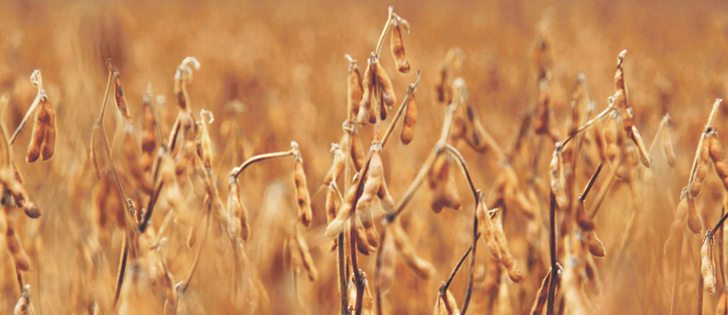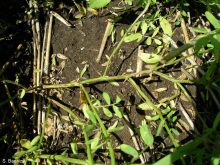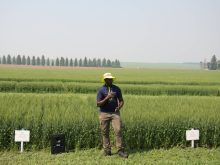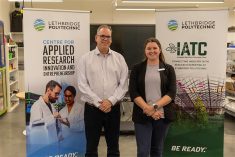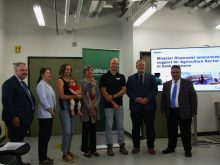A Washington State University plant scientist may have discovered how to accomplish double nitrogen fixation in soybeans.
Plant biologists have tried for decades to enhance the symbiotic relationship between legume plants and soil bacteria, in which rhizobia bacteria provide the plant with nitrogen and the legume gives carbohydrates to the bacteria for energy.
Mechthild Tegeder took a different approach. She studied how nitrogen moves within soybeans and learned that it’s possible to dramatically improve the transport of nitrogen from nodule to leaf to seed.
Read Also

Why feds imposed EV tariffs
Moe and Kinew have a fight on their hands when it comes to eliminating the EV tariff. Canada has to worry about pissing off the U.S. and Mexico and hundreds of thousands of auto workers.
Manipulating the compounds that transport nitrogen in soybean plants allowed Tegeder’s soybeans to fix twice as much nitrogen and increase seed yields by 36 percent compared to a group of untreated plants.
“I’m a cautious scientist … and I’m very excited how promising this is,” Tegeder said from her office in Pullman, Wash.
“(What) I was really impressed about is the amount of additional nitrogen fixed…. Almost 100 percent more nitrogen is fixed.”
Tegeder was less impressed by the yield increase because the soybeans were grown in a greenhouse. She will have to repeat the experiments in the field to verify the gains.
It should be fairly straightforward technically to commercialize Tegeder’s idea if the results hold up.
When plants uptake nitrogen from the soil, it’s converted into another form in the plant, usually an amino acid. The amino acid, which is an organic compound, moves the nitrogen from the root to the leaves.
However, it’s different in soybeans because compounds known as ureides transport nitrogen through the plant.
Tegeder and her student, Amanda Carter, found a gene in a common bean that aids the ureides and boosts the flow of nitrogen in the plant.
They transferred the gene into soybeans, and the results were dramatic.
“Nodule numbers were strongly elevated, leading to an increase in plant nodule biomass of up to 80 percent,” Carter and Tegeder wrote in their paper, published in Current Biology.
“(It) increased the number of pods by 14 to 41 percent.”
Boosting nitrogen fixation in soybeans and potentially increasing soybean yields is significant, but the discovery has broader potential.
“I believe this approach can be transferred to other plants,” Tedeger said.
One challenge may be the technology. Putting a gene from a common bean into a soybean plant is transgenic, so regulators would likely classify the technology as genetically modified.
Taking a GM trait to market has become extremely expensive and time consuming because regulators require extensive safety tests.
Brian Ellis, a University of British Columbia plant scientist, said it can cost $100 to $150 million to develop and register a GM trait.
Crop science companies had not contacted Tegeder about her discovery as of mid-October, but others are calling.
“I have got phone calls and inquiries from farmers, asking me when this can be transferred into the field,” she said.
Tegeder hopes plant breeders and seed companies take advantage of the opportunity if tests prove the technology does function in the field,.
“I believe it can have a strong benefit for agriculture but also for the environment,” she said.
“It might (improve) the nitrogen use efficiency … which can have huge advantages, potentially less fertilizer input.”


